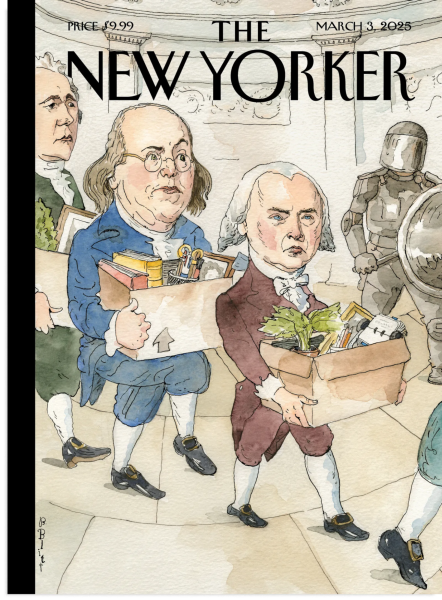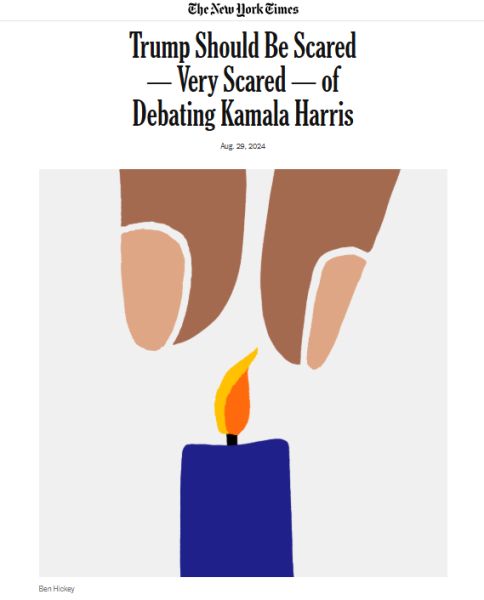
Maya Gest '26
Illustrated self-portrait.
Newspapers like the Blue and White are filled with stories in the form of words. This manner of storytelling can be incredibly illuminating—but sometimes has a drawback. Written word is occasionally not as accessible or appealing to audiences who prefer visuals. Editorial illustrators create covers, cartoons, and illustrations for newspapers to entice readers of different news-absorption preferences.

Cover illustrations can be found on many well-known newspapers and magazines, such as The New York Times or The New Yorker. These illustrations (or photographs) use graphic design elements (often in the form of eye-catching colors, forms, or compositions) to convey stories in ways that attract attention and add nuance. Covers can highlight the paper’s top story or provide an overview of the entire edition.

Often, like in the cover shown to the left, illustrators employ symbols or recognizable figures to quickly and easily get to the point. It is clear that the founding fathers are packing their things and leaving, their faces lined with looks of disgust and disappointment. The reader can use this to see, before even looking at the article, if it will appeal to them.
Additionally, individual illustrations that accompany articles can draw attention to the writing, but also emphasize certain aspects of the contributor’s work. For example, the illustration pictured to the right, composed of just a few color-block forms, ingeniously reflects and adds to the writers’ message. The candle is a representation of Donald Trump, and two fingers (presumably of Kamala Harris) threaten to extinguish it.
In this way, illustrations can serve a political purpose. The artist gets to voice their opinions. This can be seen even more explicitly in political cartoons, which have a long history.

“Join or Die” is a famous political cartoon that was created by Benjamin Franklin and published on May 9, 1754, in the Pennsylvania Gazette. This political cartoon contains a simple and understandable illustration and slogan. Readers of the newspaper and students who learned about it centuries later didn’t have to navigate through dense articles to understand Franklin’s point: the colonies must unite (in this case, to succeed in the French and Indian War).
It’s key to note that political cartoons are often created to mock people and groups, and some creators purposefully perpetuate harmful stereotypes when visually representing them. Though this use of racist and sexist caricatures has gradually decreased, there are still cartoons that are published now that use them. It’s so important that illustrators and publishers use visuals in newspapers for good, in ways that do not employ these tactics. Art should be created to inform and offer different perspectives, not hurt people.
As the new Art Director of the Blue and White, I am excited to put my artistic skills to work and add illustrations to my peers’ articles. Additionally, I oversee the publication of cartoons in the newspaper, available on the home page. Keep an eye out for more art!
If you’re interested, check out some examples of illustrations from the New York Times and political cartoons in American history.